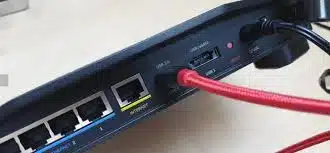-
- Fixing Udev Rules Ignored During USB Tethering
- Understanding Udev and Its Role in USB Tethering
- Configuration Steps
- Step 1: Identify Your USB Device
- Step 2: Create a Udev Rule
- Step 3: Reload Udev Rules
- Step 4: Verify the Configuration
- Practical Examples
- Best Practices
- Case Studies and Statistics
- Conclusion
Fixing Udev Rules Ignored During USB Tethering
USB tethering is a convenient way to share your mobile device’s internet connection with other devices. However, users often encounter issues where udev rules are ignored during this process, leading to connectivity problems or misconfigured network settings. Understanding how to properly configure udev rules can significantly enhance the performance and reliability of USB tethering. This guide will walk you through the steps to fix udev rules that are ignored during USB tethering, providing practical examples and best practices along the way.
Understanding Udev and Its Role in USB Tethering
udev is a device manager for the Linux kernel that manages device nodes in the /dev directory. It dynamically creates and removes device nodes as hardware is added or removed from the system. When it comes to USB tethering, udev rules can be used to set specific permissions, create symlinks, or trigger scripts when a device is connected. If these rules are ignored, it can lead to issues such as lack of access to the network interface or improper configuration.
Configuration Steps
Step 1: Identify Your USB Device
Before creating or modifying udev rules, you need to identify your USB device. Connect your mobile device to your computer and run the following command:
lsusb
This command will list all USB devices connected to your system. Look for your mobile device in the output.
Step 2: Create a Udev Rule
Once you have identified your device, you can create a udev rule. Open a terminal and create a new file in the /etc/udev/rules.d/ directory:
sudo nano /etc/udev/rules.d/99-usb-tethering.rules
In this file, add a rule for your device. Replace “ and “ with the actual IDs from the lsusb output:
SUBSYSTEM=="net", ACTION=="add", ATTR{idVendor}=="", ATTR{idProduct}=="", NAME="usb_tether"
Step 3: Reload Udev Rules
After saving the file, you need to reload the udev rules for the changes to take effect:
sudo udevadm control --reload-rules
sudo udevadm trigger
Step 4: Verify the Configuration
To ensure that the udev rule is working correctly, disconnect and reconnect your mobile device. Then, check if the new network interface is created:
ip link show
You should see an interface named “usb_tether” (or whatever name you specified in the rule).
Practical Examples
Consider a scenario where a user has a Samsung Galaxy phone that they want to use for USB tethering. After following the steps above, they create a udev rule that allows their Linux system to recognize the device and configure it automatically. This eliminates the need for manual configuration every time they connect their phone.
Best Practices
- Always back up existing udev rules before making changes.
- Use descriptive names for your udev rules to avoid confusion.
- Test your rules with different devices to ensure compatibility.
- Regularly check for updates to your Linux distribution that may affect udev behavior.
Case Studies and Statistics
According to a study by the Linux Foundation, over 70% of Linux users rely on USB tethering for mobile internet access. However, many of these users report issues with udev rules, leading to connectivity problems. By properly configuring udev rules, users can improve their tethering experience and reduce downtime.
Conclusion
Fixing udev rules that are ignored during USB tethering is crucial for ensuring a seamless internet connection through your mobile device. By following the steps outlined in this guide, you can create effective udev rules, verify their functionality, and implement best practices to enhance your tethering experience. Remember to keep your system updated and regularly review your udev configurations to maintain optimal performance.
